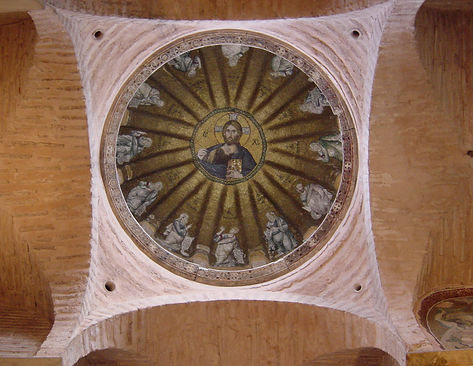<A>
Meander: * see EndNote<A>
see illustration below

<B>
Magian dome: *
Islamic dome and Byzantine dome
The Mosque of Amr ibn al-As, aka 'Mosque of the Banner Bearers'; built in 641–642 AD, as the centre of the newly founded capital of Egypt, Fustat. It was the first mosque ever built in Egypt & Africa.
see illustration LEFT
Pammakaristos Church, aka the Church of Theotokos Pammakaristos ("All-Blessed Mother of God"), famous Greek Orthodox Byzantine churche, Istanbul, Turkey; built between the 11th & 12th centuries, possibly by Michael VII Ducas (1071–1078);became a mosque 1591.
see illustration RIGHT (exterior view of dome and interior view of dome)



<C>
Russian roof-cupola: *
traditional Russian architecture employs a Kokoshnik, a semicircular or keel-like exterior decorative element in the traditional Russian architecture. They were used in the Russian church architecture from the 16th century, especially popular in the 17th century. They were placed on walls, at the basement of tented roofs or tholobates, over the window frames, or in rows above the vaults.
see illustration below- Donskoy convent in Moscow, Russia.
.jpg)
<D>
Gothic cathedral-tower: *
Rouen cathedral (built 12th century) has suffered extensive damage from nature, war & revolutions. Its impressive lantern tower & spire have been re-built many times. In 1353 the spire was blown down & was rebuilt in Late (Flamboyant) Gothic style. This spire suffered a fire (1514); reconstruction began in 1515 using a wood covered with gold-plated lead; in 1580 a parapet was added. This Renaissance spire was destroyed by lightning in 1822. A new one was rebuilt in Neo-Gothic style using cast iron instead of wood. This lantern tower with a cast iron spire gave the cathedral a claim as the tallest building in the world (151 m) from 1876 to 1880.
see illustration below
